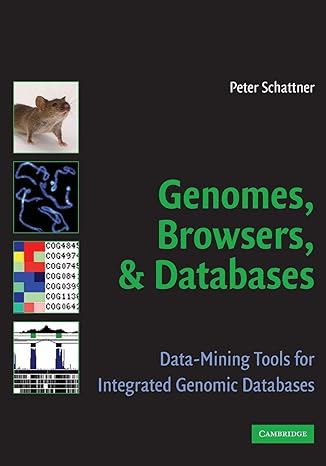Answered step by step
Verified Expert Solution
Question
1 Approved Answer
r language needs to be used . Traffic Stops For the question, were going to work with data from North Carolinas extensive traffic stop recording.
r language needs to be used .
Traffic Stops
For the question, were going to work with data from North Carolinas extensive traffic stop recording. This question focuses on data tidying and exploratory data analysis.
- North Carolina was one of the few states to mandate demographic data collection on all traffic stops. These data include stops, searches, and contraband hits by race, by agency, and by year from 2002 to 2016. They also give comparison rates for different racial groups compared to whites. This allows us to see if police are disproportionately likely to stop and search minorities as opposed to white drivers.
- First, read in the data NCStopsSearchesHitsByAgencyByYear2002-16.xlsx and rename the variables so they are meaningful. These names can be whatever you want as long as theyre more descriptive as the current variable names. Hint: Use the codebook tab from the original xlsx file to know what each variable name means and how it is calculated.
- Now, plot the rate police searched black drivers against the rate for white drivers. Research what geom_ablinedoes and add that to your plot. What can you learn from this graph?
- Find the agencies with the highest average search rate ratio of Black drivers compared to White drivers. This is a variable that already exists you dont have to calculate anything new. Look at larger agencies with at least 10,000 total stops. What is the agency with the highest average ratio (just take the average of the ratio for each agency across all years in the data)? What does that mean?
- You should have found that Durham Police Department has the highest search rate ratio of Black drivers compared to White drivers. Plot the search rate for Black drivers against the rate for white drivers from this agency. Set the x and y axis limits both to 0-15 so you can see all the data. You can use either scale_x_continuous() and scale_y_continuous() OR coord_cartesian() to do this. What can you determine from the graph?
- Examine how the difference between the search rate for Black drivers and White drivers has changed over time in Durham. To do this, you can create a new variable that is the difference between the Black and White search rates. When did the racial disparities peak?
- In October 2014, Durham passed a law that required officers to obtain signed consent before searching a drivers car. (If you are interested in this, read this article about a social scientists that used the data we are using to help push for this legislation.) In theory, the number of searches should go down. Plot the total number of searches conducted in Durham over time and see if this happened.
- You should see that searches actually increased slightly from 2014 to 2015. One theory for why this happened is that police started to conduct probable cause searches (where consent is not required) in place of consent searches. For a police officer to have probable cause, there must be legal justification, such as guns or drugs in plain sight. To assess the possibility of this theory, plot the total number of contraband hits in Durham over time. Does the pattern match the idea that police used contraband for more probable cause searches?
- Finally, analyze how racial differences have changed over time in Durham, plotting the search rate ratio of Black drivers compared to White drivers. Has disparity in policing between the races gotten better or worse?
Step by Step Solution
There are 3 Steps involved in it
Step: 1

Get Instant Access to Expert-Tailored Solutions
See step-by-step solutions with expert insights and AI powered tools for academic success
Step: 2

Step: 3

Ace Your Homework with AI
Get the answers you need in no time with our AI-driven, step-by-step assistance
Get Started


